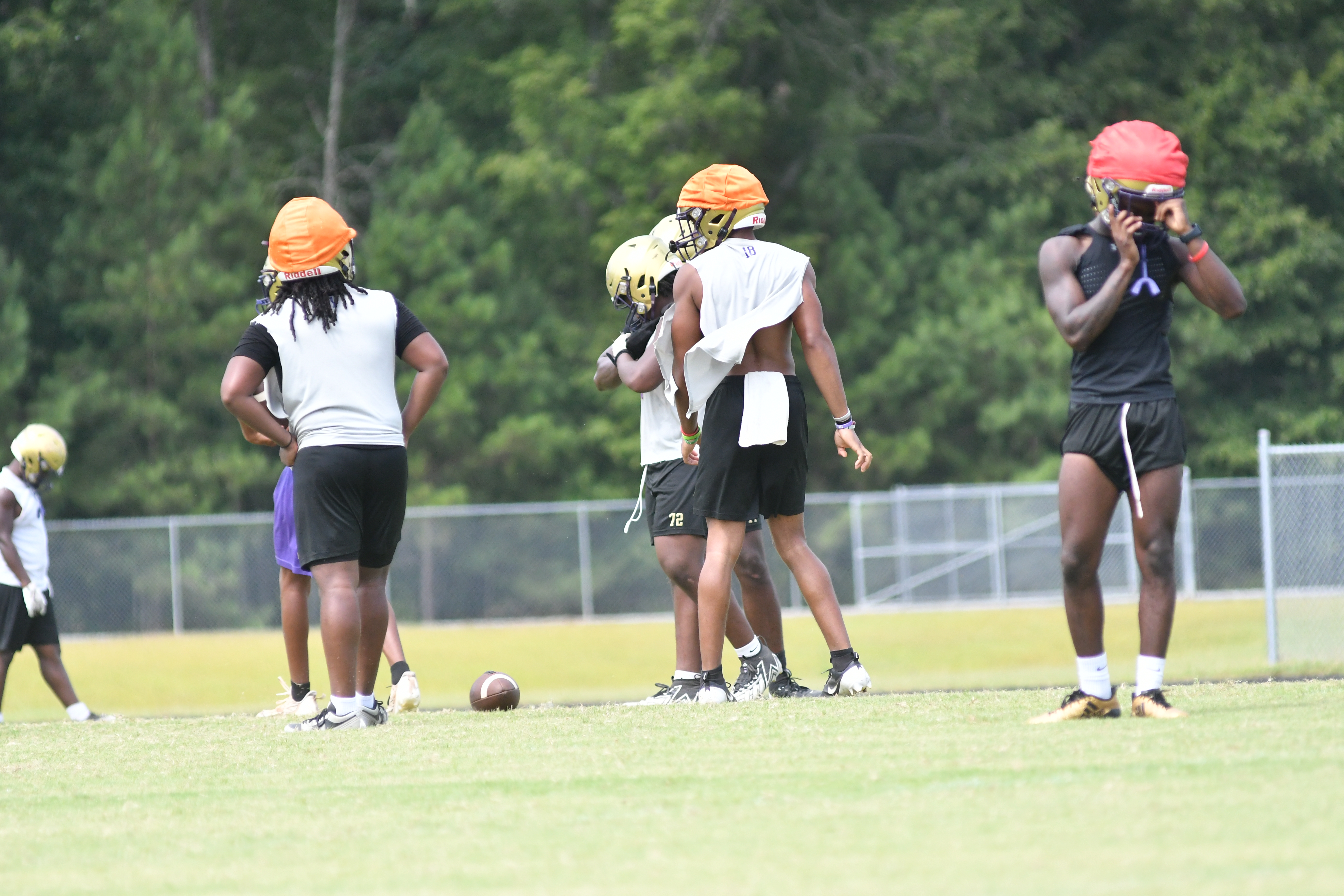Rotary Club hears from UGA Attapulgus Research Center
Published 10:18 am Wednesday, February 12, 2025
|
Getting your Trinity Audio player ready...
|
The Rotary Club held its weekly meeting at the Kirbo Center. Tommy Howell, Rotary President, took to the podium to welcome the many guests present. Next, Howell introduced Amy Batson as the member spotlight. Batson talked about her hometown, education, career, and family and how it all led her back to Bainbridge. Amy is also the social media chairman of Rotary.
Next, Howell discussed last weekend’s events, including the SRTC artifact show and the Jazz and Blues Festival.
Afterward, Howell discussed a district grant for the Peace Polls. Three Peace Polls are planted at Chason Park near the flag pole, and another one is located at the boat basin near the start of the golf course. The four languages on those two are English, Spanish, French, and Muscovy – the language of the Creek Seminole. The third one was painted at Five Points Park. The four languages there are English, Spanish, French, and Hindi. These languages were adopted based on the diverse backgrounds of students in Decatur County in their Laws of Life Essay. Speaking of Laws of Life, Howell and others will be one of the judges for the Laws of Life Essay.
Trending
There will also be an education scholarship fund and awards for the foreseeable future. There will be an MLK essay contest where three winners will read their essays. The district governor, Gordon Owens, will visit in two weeks. The meeting will consist of a welcoming and program. Food will include wraps and subs, and later pictures and a tour. An email will be sent out to members with more information on the matter.
After Rotary information, Howell introduced speakers, Lee Hitson and Amilcar Vargas, from the Attapulgus Research and Education Center.
Hitson talked about the history of Attapulgus Research and Education Center using a smartboard for the presentation. He stated, “The Center was originally leased by the University of Georgia in 1937. It was purchased by the university in 1939 and named the “Shade Tobacco Research Center.” Shade Tobacco was a booming industry from the 20s-70s. In 1939, there was a strong need for tobacco research. So, the University of Georgia opened the Shade Tobacco Research Center there to assist local growers and improve their crop production,” He continued. “Shade Tobacco declined after World War 2. So, the Campbell Soup Company in Climax wanted a research farm interested in growing okra and other vegetables and other requests conducted at the Center.”
Afterward, the Center began to change its production throughout the year. The tobacco industry was gone in 1974, and the Center’s name changed to the Extension Research Center for producing vegetable crops. As vegetable crops started to fade, the Center evolved to meet the needs of other local agriculture. Today, the Center continues supporting agricultural research and educational programs as the “Attapulgus Research and Education Center.”
Next, Vargas spoke about the Center’s development of agriculture across the state of Georgia. The Center provides non-biased research knowledge. There are nine centers, seven of which are research and educational centers. Vargas discussed the different Centers’ functionality, production process, education, and training. He also mentioned technological innovation, support services, and business and marketing strategies for advancing the Center’s agricultural practices. Vargas used pictures to illustrate the aspects of farming, crop production, irrigation systems, and rural life. Vargas introduced the team as they helped the different centers prosper: Sam Clark, Amilcar Vargas, Josh Miller, Lee Hitson, Tim Adkins, and Candace Gray.
Afterward, Hitson returned to the podium to explain the pomology of peanuts. He stated that peanuts are the number one crop in Southwest Georgia. Every crop that is planted is in a rotation program so they can grow more in the future. Peanuts are the primary crop because they produce their own nitrogen. However, peanuts can’t be planted in the same place year after year. Peanuts are also a commodity that usually holds its price. Peanuts typically come out with a contract price. So, the farmer knows what they’re getting before they get it. Peanut research is well-funded through the Georgia Peanut Commission in the National Peanut Board. Another aspect of peanuts is the root-knot nematode. The root-knot nematode is an insect pest that feeds on a peanut. It latches on the nodules and feeds on the peanut. The pest causes the peanut to fall on the ground. Peanut breeds across Georgia and the USDA are collaborating and developing a trial to plant different peanuts that can resist the root-knot nematode. The prosecution will have Dr. Nino Brown, Dr. Timothy Brenneman, Dr. Corley Holbrook, Dr. Soraya Bertioli, and David Bertioli. The trial is widespread throughout the farm, bringing in many growers throughout the year.
Trending
The peach program is another critical project. The peach program is a moderate chill belt peach rating program. The program is trying to produce a peach in the Decatur County area that can grow and adapt between 350 and 600 chill hours. The program is the last one of its kind. So, the Center is developing a rootstock approach. The rootstock approach are plants that have a well-developed root system and can be used to grow new ground growth. It will be resistant to nematodes, develop a high chill tolerance, and resist all kinds of viruses. The Center has tested the peaches to ensure they are virus-free, and they are clean. So, seeds are collected and sent off to the nurseries to be grown. They will try to market the produce within the next two or three years, and hopefully, the rootstock approach will be used throughout Georgia.
Another project the Center is working on is a sweet corn variety screening trial with Syngenta. Syngenta is a vegetable seed company. They are screening a variety of sweet corn for the area and snap beans. The trials are done with Baden Aniline and Soda Factory (BASF). They are also doing deer, pine nuts, and cotton trial studies. Coming in 2025, the Center is hoping for an irrigation trial.
Vargas returned to the podium to address the many trials, techniques, and interesting facts that agriculture is using to improve Decatur County. He also thanked the Rotary club for inviting them and allowing them to share their presentation.
Howell returned to the podium to adjourn with the pledge and the rotary creed.






